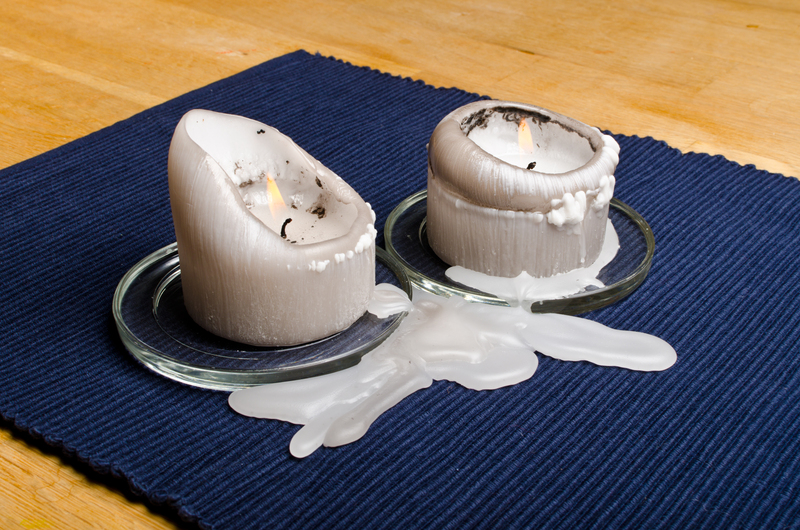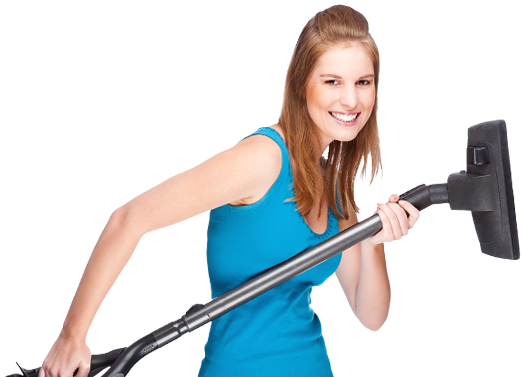Tenant's Guide to End of Lease Cleaning: Ensuring Your Deposit Return
Posted on 21/08/2025
Tenant's Guide to End of Lease Cleaning: Ensuring Your Deposit Return
Moving out of your rental property? As a tenant, the end of lease cleaning process can be overwhelming, but it is crucial to securing your full bond refund. Understanding what is expected and how to carry out thorough bond cleaning helps you avoid disputes or deductions from your security deposit. This comprehensive guide provides insightful information and expert tips to ensure that your end of tenancy cleaning meets your landlord's expectations--all while making the process as stress-free as possible.
Why End of Lease Cleaning is Important for Tenants
When your tenancy agreement comes to an end, your landlord or property manager will inspect the property to determine whether it meets the cleanliness standards set out in your lease. The main goal of the end of lease cleaning is to return the property to its original condition, allowing the next tenant to move in without issue.
- It is a requirement in most tenancy agreements.
- Avoids deposit or bond deductions due to cleaning issues.
- Helps maintain a good rental history for future references.
- Ensures a smooth handover to the next tenant or landlord.

What is End of Lease Cleaning?
End of lease cleaning, also referred to as move-out cleaning or bond cleaning, is a detailed cleaning process that involves deep cleaning every nook and cranny of your rental property. Unlike regular cleaning, this type of cleaning includes areas that are often overlooked, such as window tracks, skirting boards, and inside cupboards. Your goal is to ensure the property matches the original condition outlined in the entry condition report, aside from fair wear and tear.
Understanding Your Lease Agreement and Bond Requirements
Start by reviewing your lease agreement and entry condition report to understand what is required in terms of cleanliness. Many rental agreements stipulate specific standards or guidelines for end of lease cleaning that should be followed before vacating the premises.
- Check for any clauses about professional carpet or pest cleaning.
- Make note of damages versus general cleaning requirements.
- Refer to your property's move-in report to compare its current state.
Common Areas Residential End of Lease Cleaning Covers
Every end of tenancy cleaning checklist should cover the following:
- Living Areas: Clean floors, walls, baseboards, and cobweb removal.
- Kitchens: Deep clean all appliances, cabinets, countertops, and sinks.
- Bathrooms: Shower, toilet, mirrors, tiles, and grout must be spotless.
- Bedrooms: Floors, wardrobes, and window sills cleaned thoroughly.
- Windows: Inside and out (as much as accessible), including sills and tracks.
- Outdoor Areas: Patios, balconies, or garages included if specified in the lease agreement.
DIY Move Out Cleaning vs. Hiring Professional End of Lease Cleaners
Deciding whether to do the cleaning yourself or to hire a professional cleaning service is an important consideration. Each option offers distinct advantages and may affect your bond return process.
DIY End of Tenancy Cleaning
- Cost-effective: You can save on cleaning fees by doing it yourself.
- Flexibility: Clean at your own pace and schedule.
- Control over products used and standards.
- Risk: May overlook areas that professionals would not, leading to possible bond deductions.
Hiring a Professional End of Lease Cleaning Service
- High cleaning standards: Professionals know what landlords expect.
- Most services offer a bond back guarantee.
- Saves time and reduces stress during a busy move.
- Potential for added extras, like carpet steam cleaning or pest control.
- Can be more costly than DIY cleaning.
Comprehensive End of Lease Cleaning Checklist
To maximize your chance of a full deposit refund, follow this exhaustive end of lease cleaning checklist:
General Cleaning for All Rooms
- Dust ceilings, fans, light fixtures, and air vents.
- Remove all cobwebs.
- Wipe down walls and remove all marks, stains, and scuffs.
- Clean light switches, power points, and doorknobs.
- Wash windows (inside and outside where possible), plus window ledges and tracks.
- Clean all doors, skirting boards, and architraves.
- Vacuum and mop hard floors, steam clean carpets if required.
- Empty and clean wardrobes, cupboards, and drawers.
- Remove all rubbish and personal belongings.
Kitchen Cleaning Guide
- Degrease stove tops, oven, grill, and rangehood filters.
- Ensure inside and outside of all cupboards and drawers are wiped clean.
- Scrub sinks, taps, and splashbacks.
- Defrost and clean inside the refrigerator if it is a furnished property.
- Clean dishwasher filter and run it empty with detergent.
- Wipe countertops and polish stainless steel finishes.
- Check and clean beneath/behind movable appliances.
Bathrooms and Toilets
- Scrub and disinfect toilets, including under the rim.
- Clean shower screens, tiles, grout, and bath tubs with descaling products.
- Polish mirrors and fixtures.
- Clean bathroom cupboards and drawers inside and out.
- Wipe towel rails, sinks, and taps.
Bedrooms and Living Rooms
- Vacuum carpets and/or mop floors; steam clean if required.
- Dust all surfaces, including wardrobes and shelves.
- Wipe window sills and remove any marks from walls or doors.
- Ensuring all light fittings have working bulbs and are clean.
Outdoor and Additional Areas
- Mow the lawn, weed gardens, and tidy outdoor spaces.
- Clean driveways, patios, and garages.
- Remove and dispose of any rubbish or unwanted items.
- Wipe down outdoor furniture (if provided).
Frequently Overlooked Areas in Bond Cleaning
To fully ensure your deposit return, pay special attention to these commonly missed spots:
- Behind and under heavy furniture and large appliances.
- Inside the washing machine, dryer, and lint filters.
- Window tracks, blinds, and curtain rails.
- Light fittings and ceiling fans.
- Door frames, air conditioning units, and filter vents.
Tips for Stress-Free End of Lease Cleaning
- Start early: Begin cleaning several days before your final inspection.
- Work room by room and use a checklist.
- Document your cleaning with photos matching the entry report.
- Dispose of rubbish and arrange for unwanted items to be collected or recycled.
- Communicate with your landlord or agent: ask if there are any areas of concern in advance.
- Double check keys, remotes, and instruction manuals are returned with the property.
Bond Return Process: What Happens After Cleaning?
Once you have finished your end of lease cleaning, your landlord or property manager will conduct a final inspection. Here's what typically happens:
- Inspection is compared to the entry condition report plus allowance for fair wear and tear.
- If cleaning is satisfactory, your full bond is refunded (usually via a tenancy deposit scheme or trust account).
- If areas are missed or found unclean, you may be asked to redo the cleaning or money may be withheld from your deposit for professional rectification.
- You have the right to dispute bond deductions via your local tenancy tribunal if you disagree with the findings.
The Benefit of a Professional End of Lease Cleaning Service
Bond cleaning services guarantee that every inch of the property meets the requirements for a deposit refund. Most reputable end of lease cleaning companies offer:
- Bond-back guarantee: If the real estate agent isn't satisfied, they'll come back and re-clean for free within a certain period.
- Highly trained cleaners with experience in what landlords and agents look for.
- Use of professional-grade equipment and cleaning products.
- Services can be tailored to your rental agreement requirements, including carpet cleaning and pest treatments.
How Much Should Tenants Budget for End of Lease Cleaning?
The cost of professional move-out cleaning services varies, depending on property size, condition, and the inclusions required by your rental agreement. For a standard apartment or small house, expect to spend anywhere from $200 to $600. Additional services like carpet cleaning or pest control will add to the total price.
- Get quotes from several reputable companies.
- Check if the quote includes a bond-back guarantee or free re-clean.
- If cleaning yourself, factor in the cost of supplies, rental carpet cleaners, and your own time.

FAQs: End of Lease Cleaning for Tenants
What happens if the cleaning is not up to standard?
Your landlord may retain part or all of your bond to cover the cost of additional cleaning.
Do I have to use a professional end of lease cleaning company?
Not always. As long as you meet the cleaning requirements set out in your lease, you can do it yourself. However, for carpets or pest treatments, professional receipts may be required.
What is considered 'fair wear and tear'?
"Fair wear and tear" refers to the natural deterioration that occurs over time with normal usage. Stains, excessive marks, or damage beyond this are not considered fair wear and tear and may result in bond deductions.
Final Thoughts: Smooth Your Move with Thorough Bond Cleaning
End of lease cleaning is more than just a chore--it's the key to getting your full refund and maintaining a positive reference for future rental applications. Whether you roll up your sleeves for a detailed DIY clean or hire a professional bond cleaning service, preparation and attention to detail are crucial. Follow our complete checklist and expert advice to navigate the end of tenancy cleaning process and secure your deposit return with confidence.


